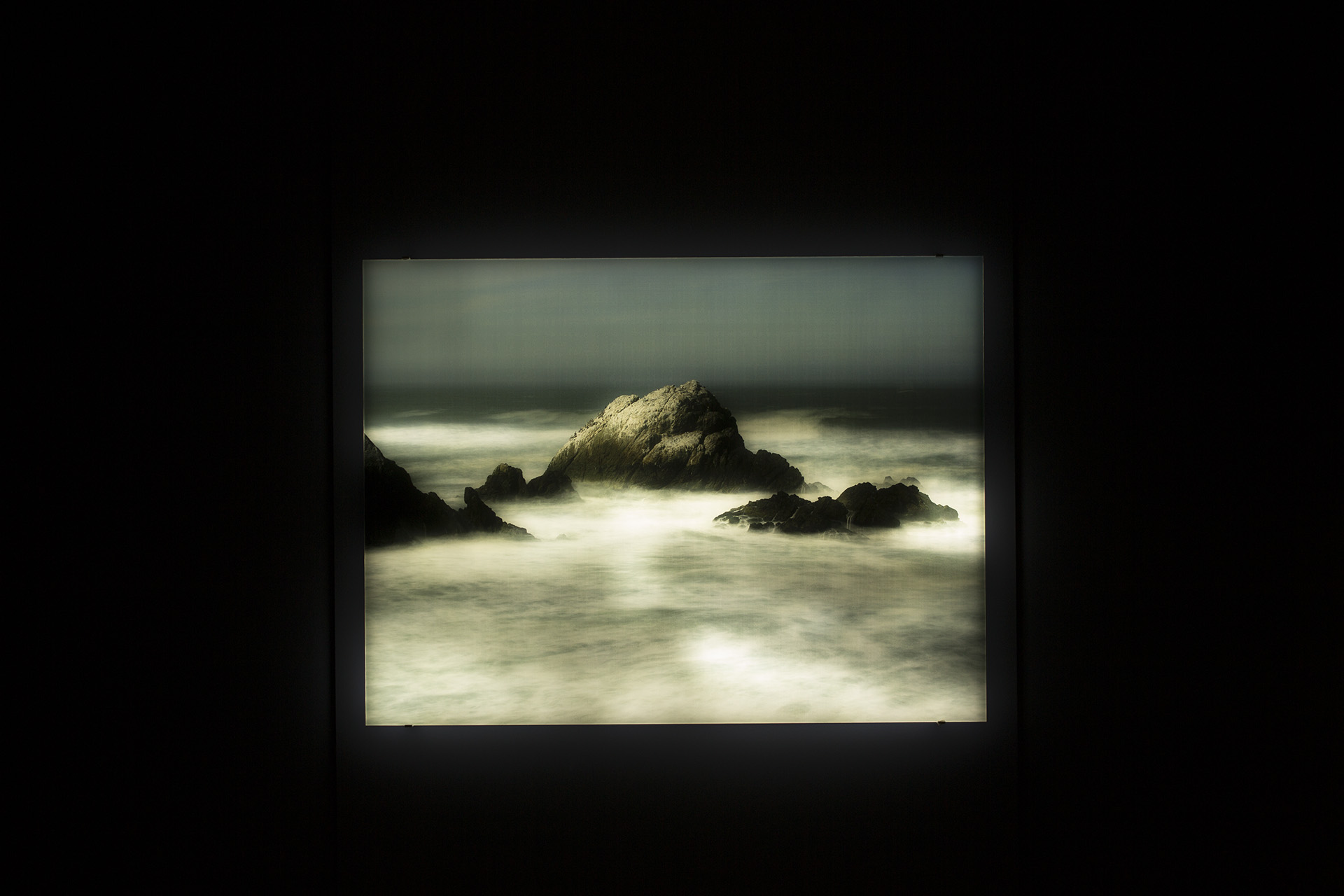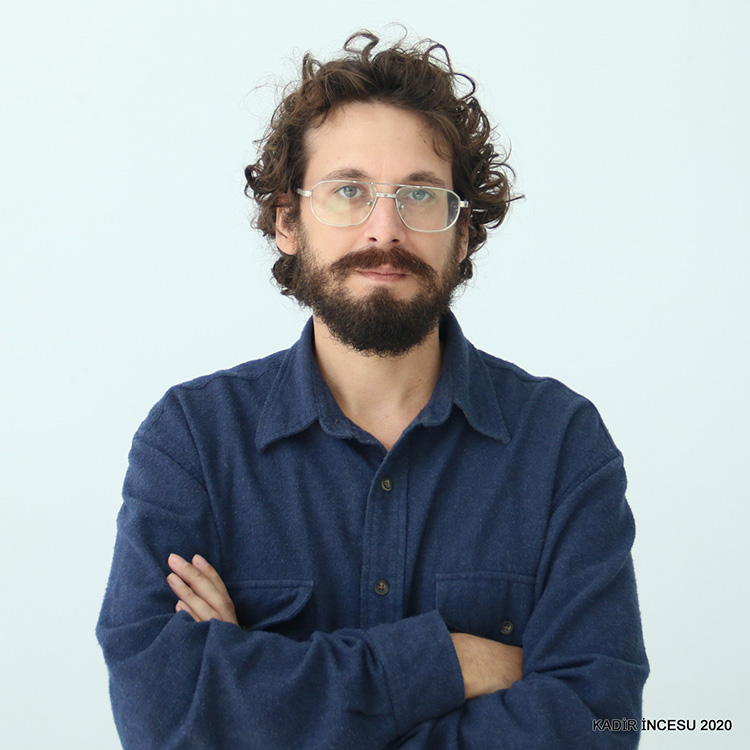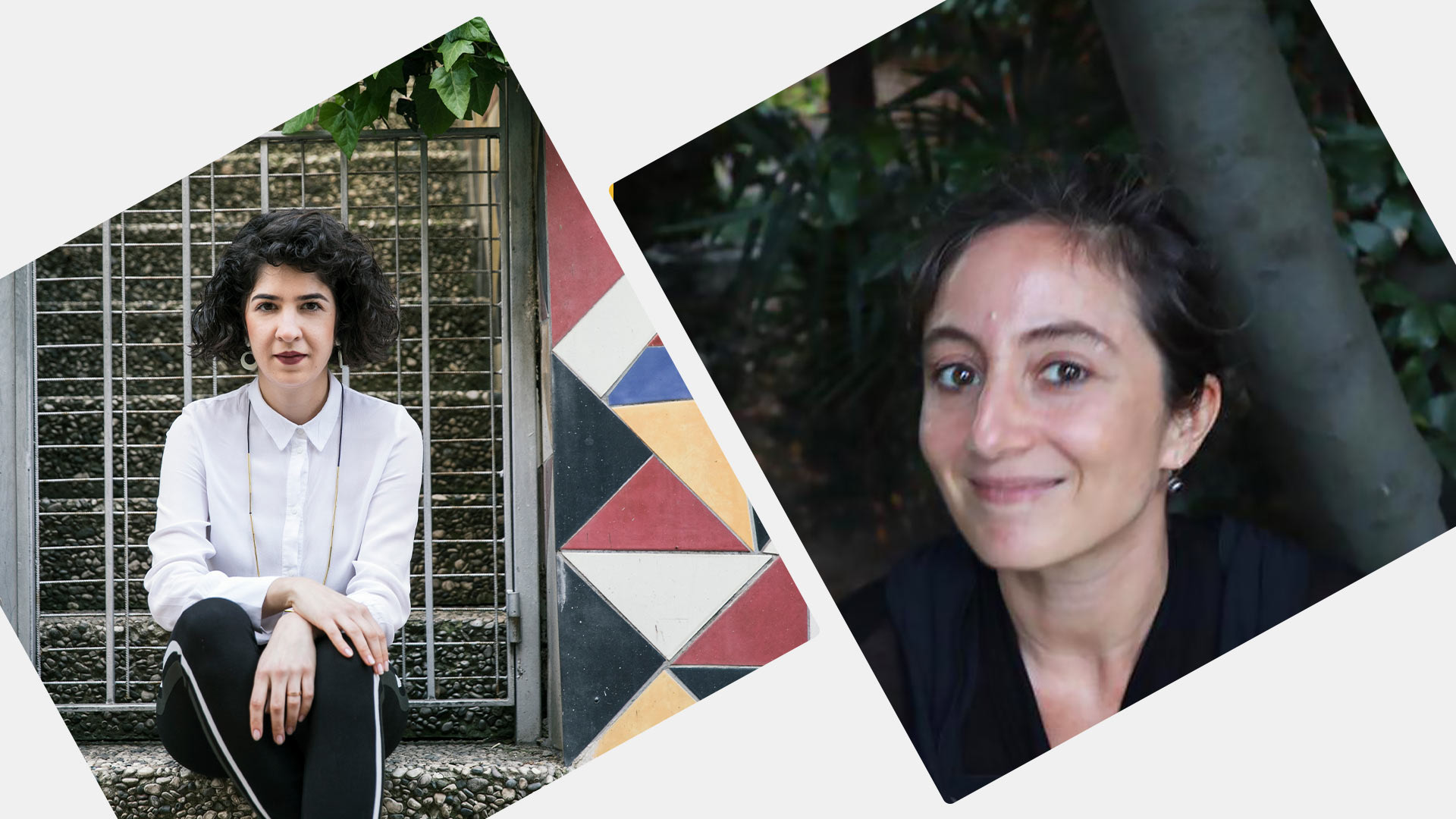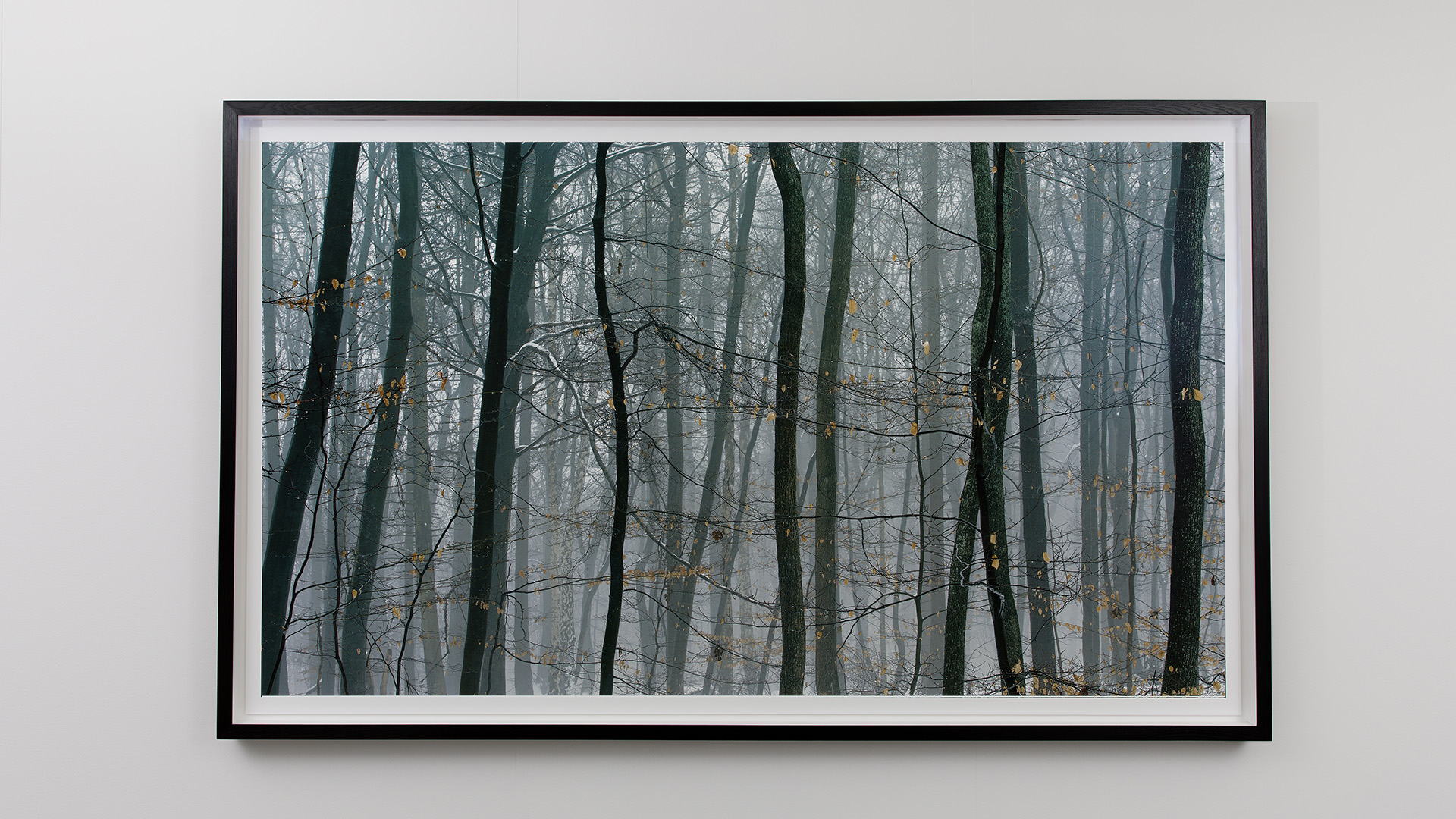Blog
The Manifestation of Ambiguity in Art:
Jim Campbell's Seal Rock
25 December 2020 Fri
The series of articles I prepared for Borusan Contemporary Blog titled The Transformation of the Landscape Image takes the works in the Borusan Contemporary Art Collection as a point of departure.
The works of artists who work with different disciplines and media, approaching the landscape (image) are examined within the relations established with various works and texts seen in art history. The main motivation here stems from the basic desire to view art and nature, despite the change and diversification of the tools and methods used, and the willingness to open this up for discussion through writing. The first artist I will focus on in the series is Jim Campbell and his 2010 work Seal Rock.
“They solved the problem by turning the space into a keyed musical instrument that was fully adequate for the intended precision and could be tuned further.”
—Pavel Florenski 1
Landscape has always been a subject of art. Looking at the early periods, it is possible to see that the landscape occupies the lower ranks in terms of subject hierarchy—especially until a certain period. The presence of the landscape on the painting surface is in a complementary position of the theme being treated; it exists to take on a secondary or even a tertiary role. This is usually based on the use of the landscape for a background function outside the main subject, pushing it behind the main subject. For a landscape that completes the main subject, to create depth in painting, that is the landscape that appeals to perspective concerns, we have to wait until the 19th century to see it release from this kind of instrumentalized status. Landscape proves that for the first time in history, especially with the German Romantics 2 that it can become the main subject of painting on its own. By placing nature in the center of the painting plane, the artist gives the landscape the freedom it deserves. Just as the subject of art is art itself, the subject of landscape becomes only landscape. Landscape painting, which is its own subject, thus declares its ontological independence.

Jim Campbell, Seal Rock, 2010.
112 x 84 cm.
1728 LEDs, custom electronics, treated plexiglas.
Similar concerns in view of the landscape and nature continue despite all the time that has passed, but the means of expression used methodologically change and develop. Undoubtedly, issues such as the fact that what is meant to be explained do not fit into traditional models and the content exceeds the format are effective. It is quite possible to read Jim Campbell's Seal Rock in the context of changing the means of expression.
Jim Campbell continues his artistic career, which started with filmmaking, in a field we can call electronic art. We see how he added technology to art in his works, which were common since the 1990s. Technology is used in Campbell’s practice as a method of diversifying the language of expression and, in particular, of presenting to the viewer things such as light, led, memory, illusion and the ambiguous, which define the artist’s work.
Campbell's particular emphasis in his work is the effect of light and low-res works on the audience. The artist seeks complete ambiguity in art by producing works with low resolution. The underlying dynamic of the ambiguity is undoubtedly the desire to construct an interactive structure between the audience and the work and to push the audience to an active role in the work by breaking the passive position of the audience. Of course, the fact that low resolution images are open to manipulation is another factor. 3
Campbell's work Seal Rock can be interpreted as the manifestation of similar concerns reflected in his landscape work. The subject of the work is inspired by the huge rock group in the states of Oregon and California (San Francisco) from which it is named. It is obvious that the large cliffs on the coastline of the region, where many seals and sea lions once lived, were influential for the San Francisco-based artist. However, the crucial issue that needs to be addressed here is Campbell's transformative touch on the landscape of nature. The artist presents the natural landscape specific to the region within a new fiction and perspective, giving an absolute ambiguity. While doing this, the first gesture that will attract the attention of the audience is his leaving the coastline out of the space; the sea, rock and sky trio are brought closer to the center. The second striking touch is provided by the cliffs surrounded by a circle of fog / foam, which resembles a fog cloud, but also reminds us that there may be foams on the water, given the intense wind and wavy structure of the region. The low resolution image established with the possibilities of the technique that accompanies all of these, opening up the image to interpretation through its ambiguity and lack of definition.
In the light of all these indicators, it is possible to see that the crisis experienced in human-nature tension 250-300 years ago, despite different socio-economic, social and political conditions, contained the same ambiguity. The share of thinkers like Edmund Burke and Immanuel Kant in accepting ambiguity as a determinant of art cannot be underestimated. 4 The thinkers in question draw the boundaries of a new aesthetic category by putting the judgment of "sublime" taste against "beauty". Although high acclaim includes definitions that differ according to writers, these definitions basically converge on a common denominator; and this is indisputably that high taste is a much superior type of aesthetic judgment over beautiful taste. Ultimately, the beauty of a work of art in its sublime context depends on its ability to evoke horrible and terrifying feelings in the audience. Edmund Burke said that the Supreme reveals the strongest emotion the mind can feel; he believed that concepts about pain are stronger than those about pleasure. 5 That is why mountains, galleons, Alps, avalanches, stormy seas are regarded as objects of the sublime or great things in terms of their dimensions.
At this point, it is possible to construct an analogical relationship between the ambiguity that Jim Campbell aims to reflect in his Seal Rock work and the uncertainty in Caspar David Friedrich's Morning Mist in Mountains. 6 Just like Seal Rock, Caspar David Friedrich, in the context of the judgment of supreme taste, approaches it with an expression of uncertainty, similar to the landscape of Morning Mist in Mountains. Like the web of fog / foam that envelops the massive heaps of land seen on Seal Rock, a dense cloud of fog in Friedrich's Morning Mist in the Mountains surrounds the mountain. The similar fog / foam web manifests in both works for a common purpose: to invert the visible-three-dimensional-reality. Friedrich does this with traditional methods; Campbell provides a continuous data flow of the image projected onto the plexiglass surface through grids, so that a moving surface emerges from a stable image.
Friedrich's aim is to create a sense of unknown by turning the mountain he sees into the ambiguous. Ultimately, a perception of reality that cannot be fully seen and understood will inevitably awaken a sense of curiosity in the mind. While both artists are fictionalizing an element that triggers the imagination in the eyes of the audience with the implicit presentation of nature, as well as a way to escape from the mimetic representation of nature. For a Californian who doesn't know the name of Jim Campbell's work, what he sees may refer to anything but Seal Rock. While Campbell brings out this kind of ambiguity, his aim is to make the audience open up to the interpretation in front of what he sees. The link between what is seen and what is said is broken, creating a kind of indeterminacy 7 . Thus, he can begin his interpretation from the ground zero in the face of what is alien to the viewer object.
Jim Campbell plays with the ontology of nature and space and does not prefer to present images clearly and clearly. His approach to art is, of course, not in the details, but in the latent truth behind the visible. Considering that details can sometimes be misleading, it is understandable that Campbell focuses on the part rather than the whole. Thus, while making the audience a kind of interpreter, it also places the audience on the edge of infinity, in Robert Rosenblum's words. 8
1- Pavel Florenski, Reverse Perspective, 1919
2- Although Caspar David Friedrich played a major role in making the landscape the main subject of the painting, William Turner and John Constable from England, the Hudson River School led by Thomas Cole in the USA, the Barbizon School from France. and the Düsseldorf School of Painting from Germany should be considered in the same vein.
3- From the YouTube video from December 10, 2012. https://www.youtube.com/watch?v=-JsLgypYqCM
4- Immanuel Kant gives a description of the sublime objects in the Analytic of the Sublime chapter of his book Critique of the Power of Judgment (1790). For moredetailed information, see Immanuel Kant, "Analytic of the Sublime", Critique of the Power of Judgment, Trans. Paul Guyer, Eric Matthews, Cambridge University Press, New York, 2002, p. 128-160
5- Edmund Burke, A Philosophical Enquiry into the Origin of Our Ideas of the Sublime and Beautiful, 1757
6- Burke says uncertainty is essential to make anything intimidating. ibid.
7- In Jean François Lyotard, the Sublime and the Avangard, he approaches the principle of Indefinite in the context of the sublime picture. Art, with indterminacy, no longer needs anything external. For detailed information, see Jean François Lyotard, “The Sublime and Avangarde”, The Sublime, Cambridge Press, 2010, London, p. 27-33
8- Robert Rosenblum, Modern Painting and The Northern Romantic Tradition: Friedrich to Rothko, Routledge, 1977, New York, p. 110
ABOUT THE WRITER
Uras Kızıl is an Istanbul based art historian, critic and researcher.
Kızıl graduated from Mimar Sinan Fine Arts University cum laude in 2015. He studied at the Berlin Freie Universität with the Erasmus program in 2014. Upon his return, he wrote his undergraduate thesis titled Romantic Thought and Romanticism in 19th Century Painting. In 2018, he graduated from Istanbul Technical University Art History Department with his thesis titled The Effects of Romanticism on 20th Century Art. His master's thesis was supported by ITU BAP. Kızıl continues his doctoral studies at Istanbul Technical University.
Working as the archive manager of Galeri Nev Istanbul between 2018-2020, Kızıl's texts have been published in publications including such as e-skop, Manifold, Argonotlar, K24, as well as in exhibition catalogs and books since 2015.
Kızıl, who is a member of AICA, teaches at the Department of Art Management at Kültür University.




